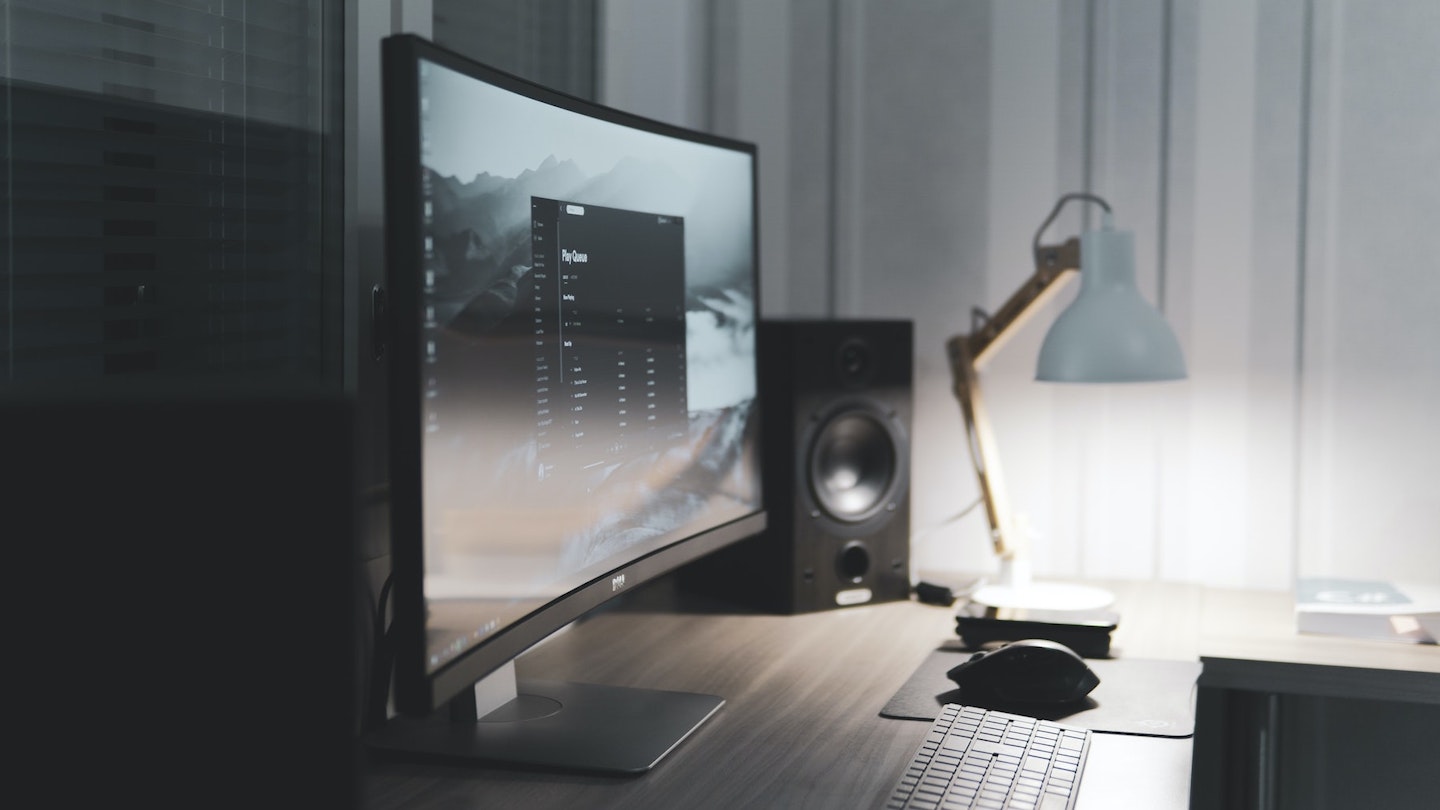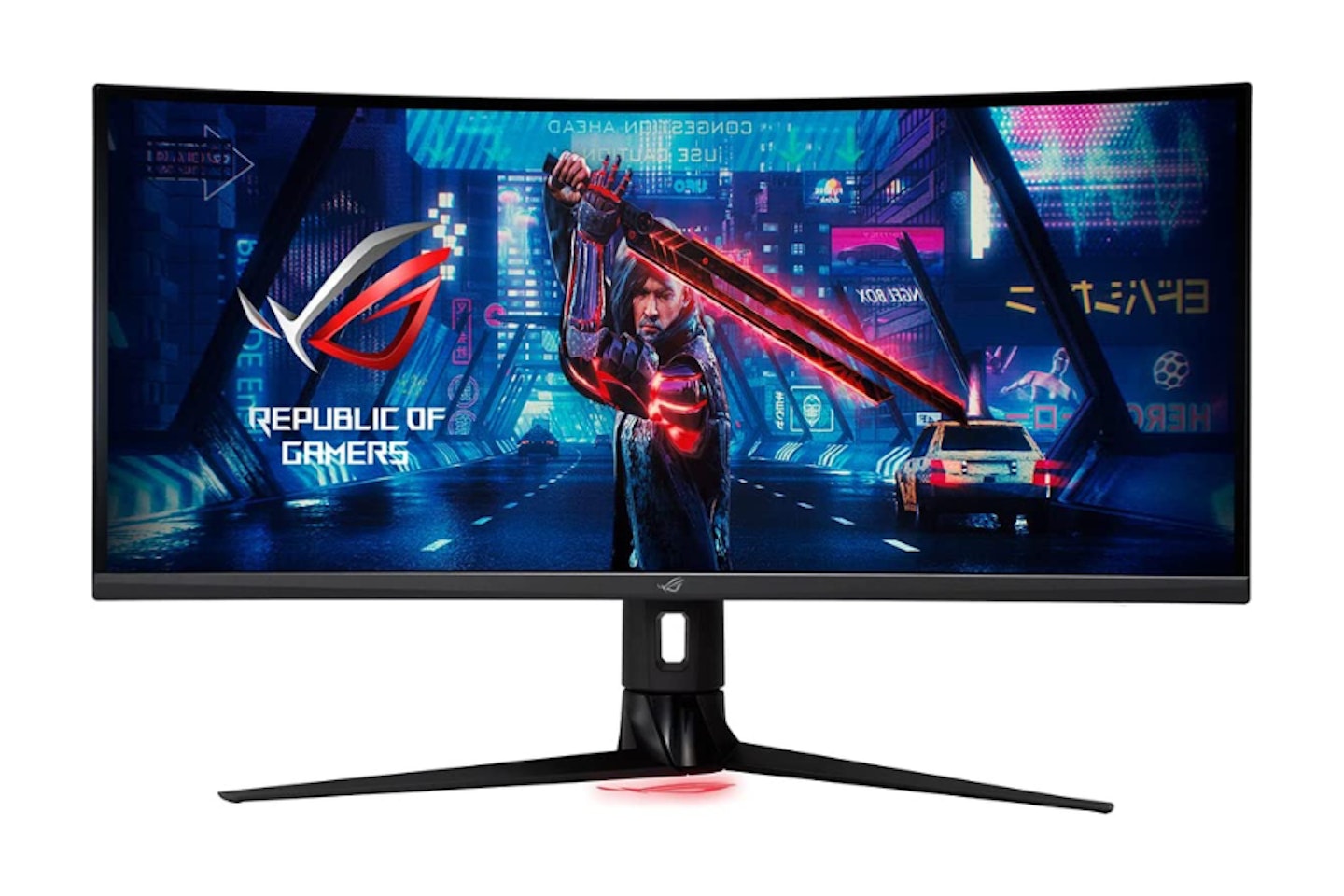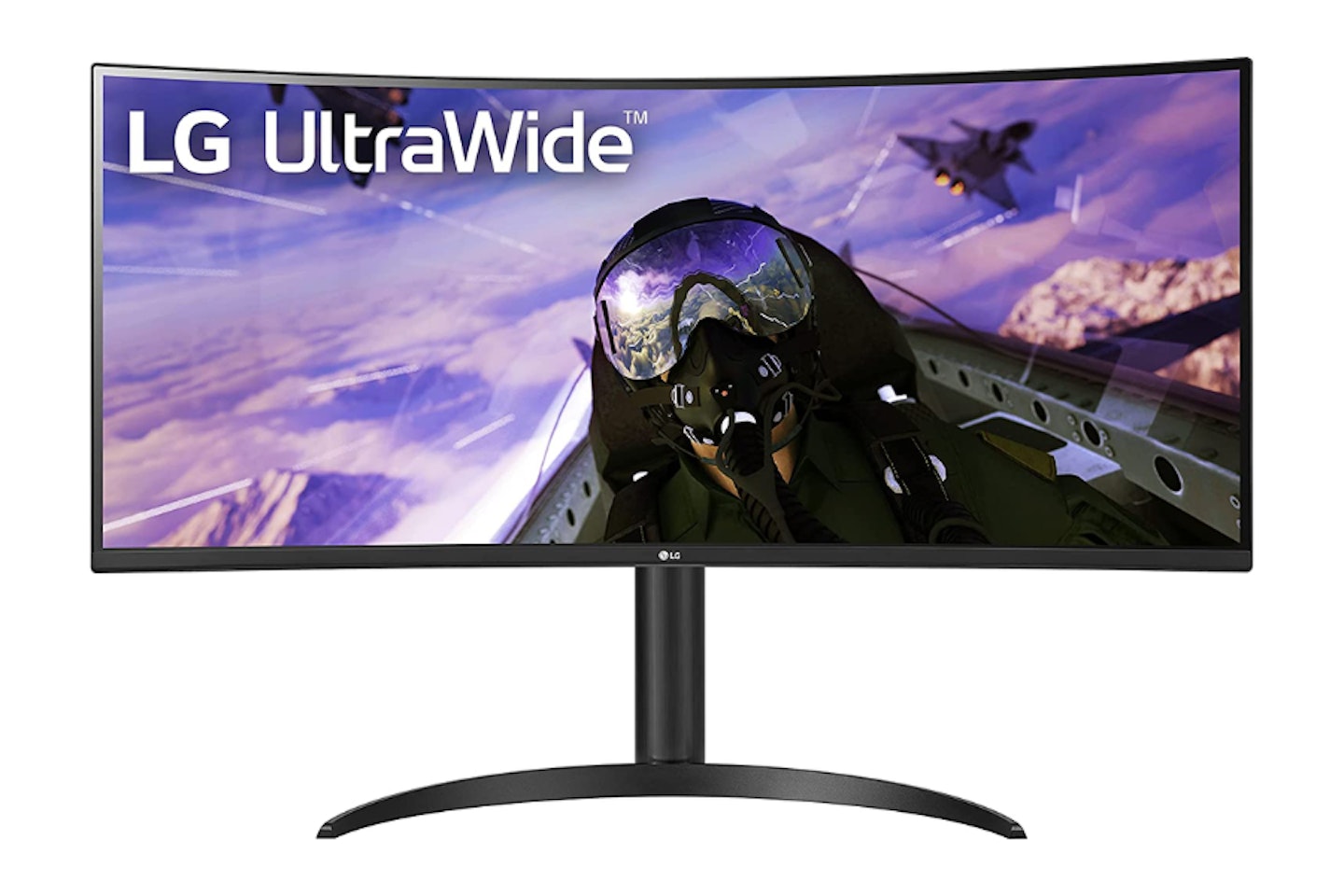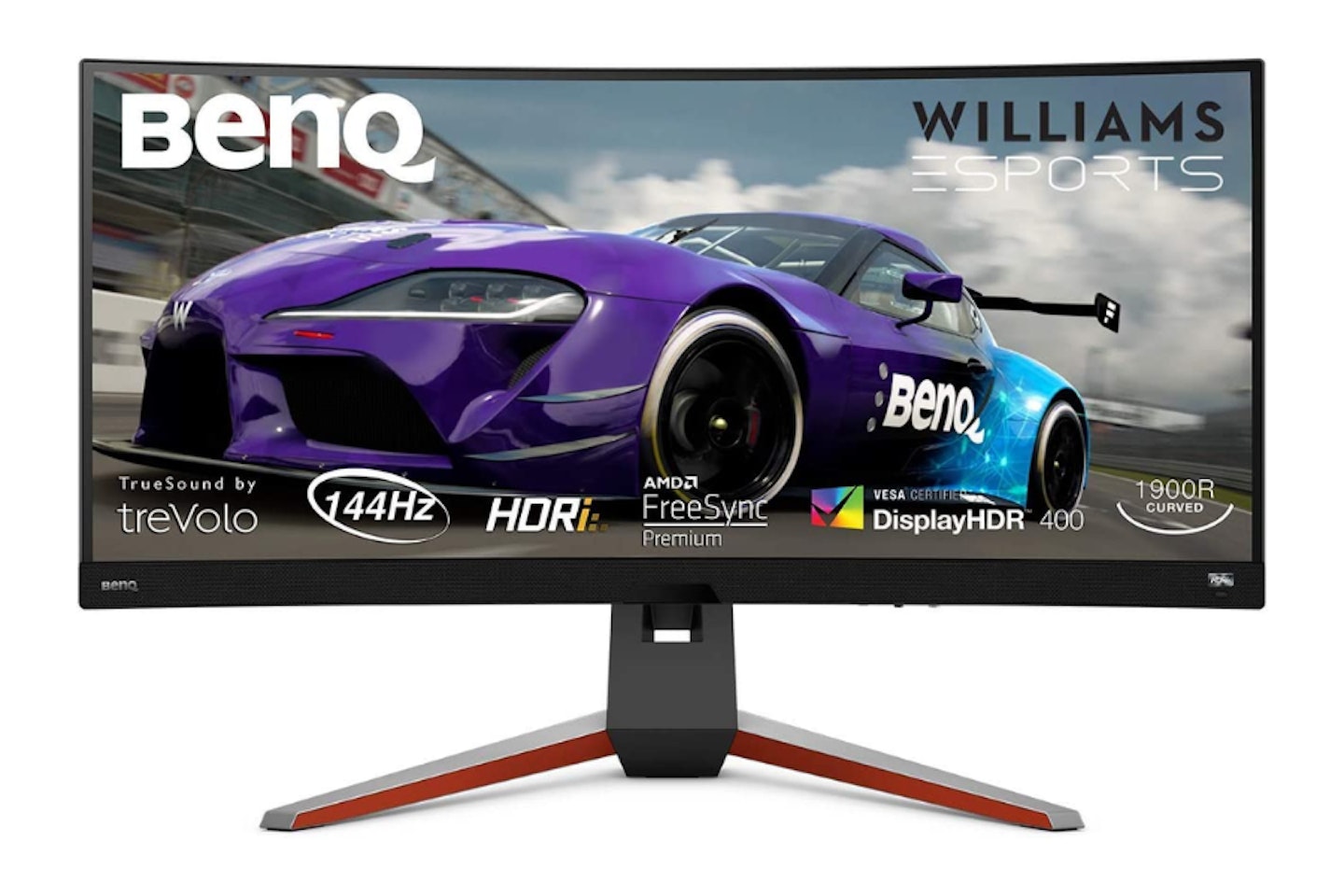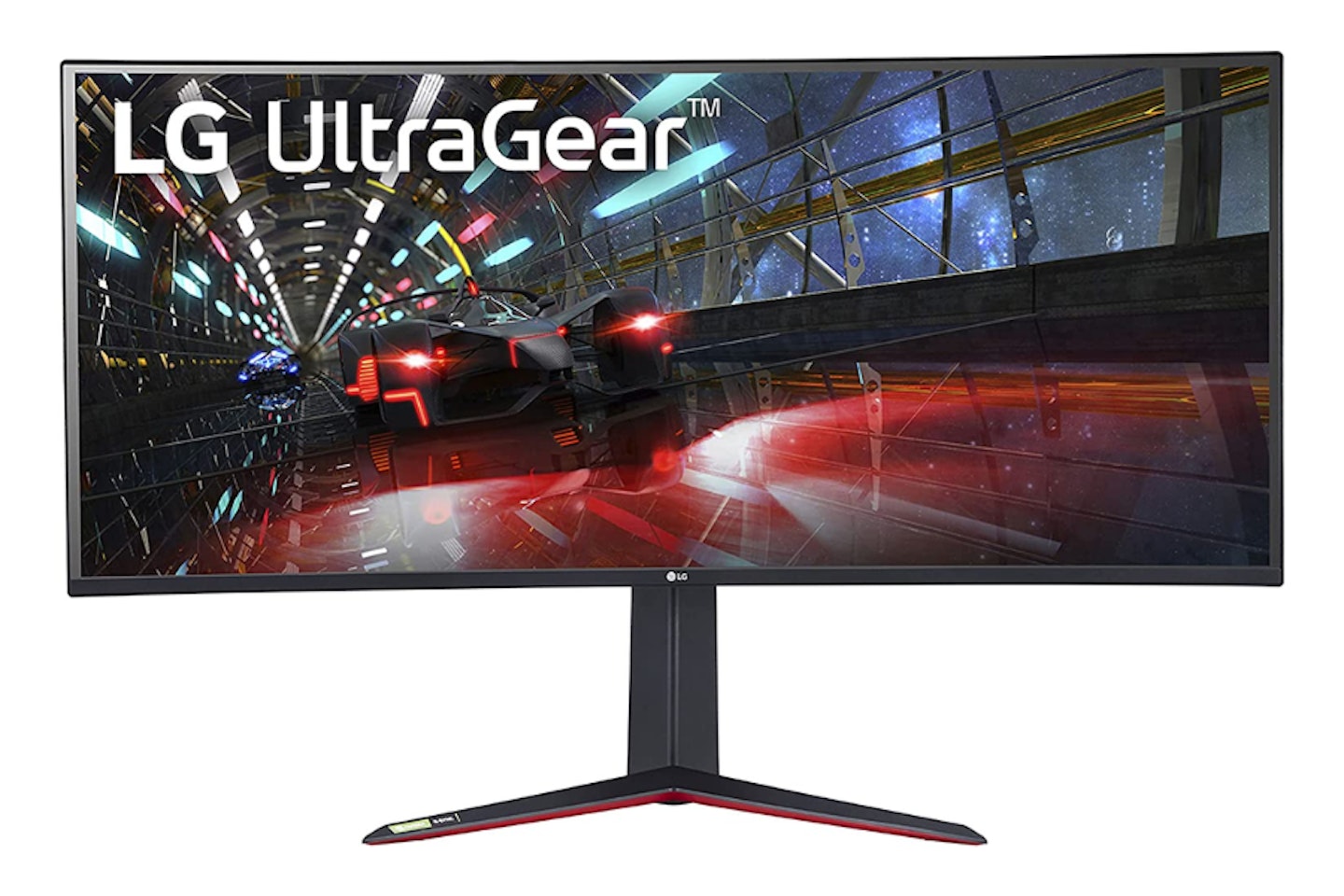Having the best ultrawide curved monitor is one of the most satisfying ways to get maximum enjoyment from your computer. You might simply want your PC monitor to have more workspace by having a larger desktop, or perhaps you crave more immersion from the latest games. Either way, you should seriously consider getting a new screen of the ultrawide variety.
But what is ultrawide? Surely it's just a widescreen display, right? Well, yes - but also no. Ultrawide monitors are just that, monitors with wider-than-wide screens. The benefits here, after the increased size, is twofold: Firstly, creative types can work on a huge scale, without the bezels of dual-screen splitting things in two; absolutely ideal for those using a monitor for photo editing and the like. Secondly, once a curve is added, they more accurately mimic the field of view of the human eye. So, it's immersive without being difficult to look at for long periods.
Because they offer a serious upgrade over a standard screen and solve the annoyances of dual-screen setups, ultrawide curved monitors are here to stay. Despite not being as cheap or ubiquitous as regular budget monitors there are still some important choices to be made. Surprisingly, ultrawide monitors start around 34 inches and go all the way up to a whopping 49 inches. And then there's the usual gamut of picture enhancement features and refresh rates that you'll need to pay careful attention to before you buy.
Best ultrawide curved monitor of 2023 at a glance
• Best overall ultrawide curved monitor: ASUS ROG Strix XG349C - View at Amazon
• Best budget ultrawide curved monitor: LG Electronics UltraWide 34WP65CP - View at Amazon
• Best 4K ultrawide curved monitor: Dell UltraSharp 40" Curved WUHD Monitor - View at Amazon
• Best ultrawide curved monitor for gaming: BenQ MOBIUZ EX3415R 34 Inch - View at Amazon
Our experts have done this legwork for you, and we've also put together an expanded buyer's guide. And for techie types, we've explained some of the technical aspects of this breed of monitor, which really demonstrates why these curved screens work so well. There are various resolutions here too, from the gamer-friendly 1440p all the way to 4K monitor. So, prepare your eyes for a much wider view as we take in the very best curved ultrawide monitors available right now.
Best ultrawide curved monitor of 2023
Best overall ultrawide curved monitor
Description
Sometimes a monitor has everything in perfect balance, from size, spec and features; to design, build and price - and this ASUS ROG Strix model does just that. As a result, it's in our top spot here. The XG349C has a satisfyingly large 34"screen to cater for most users. It's aimed at gamers and has a 180hz refresh rate and 1ms response time to prove it, but being a HDR-capable IPS screen with 135% sRGB accuracy it's also ideal for all kinds of work and creative projects. The design is neutral enough to sit well in any environment, plus a thin bezel for an ultra-clean look. Perfect.
Pros
- 34" screen
- Great, solid build and clean design
- 180hz refresh rate for smooth visuals
- HDR
- 1ms response time
- G-sync compatible
- Plenty of connections
Cons
- No built-in speakers (but, external is always best)
Best budget ultrawide curved monitor
Description
LG have quite the range of ultrawide monitors on the market, having fully embraced the benefits that the extra space brings - as well as the comfort and immersion of a curved screen. Here we have the UltraWide 34WP65CP - which has HDR10 for more colours in the palette, not something we see too often on monitors at a budget price. It also has 7W stereo speakers which, while we would always go for decent external speaker systems, is great if you're just starting out with a larger screen. And, of course, this is an LG - so you can expect a decent, solid build and performance, especially at a price as good as this.
Pros
- HDR10
- Freesync for smooth motion
- Black Stabiliser for better dark zones
- 7W Stereo Speakers with MaxxAudio
Cons
- VA panel is good, but IPS is better
Best ultrawide curved monitor for gaming
Description
For gaming, the BenQ MOBIUZ EX3415R is the best ultrawide curved screen around. With 3440x1440 pixels to play with, the screen gives you more than enough space to keep your gaming content in view, and the curve is really pleasant on the eye, too. The 144Hz refresh rate is also going to give a GPU plenty to work with, allowing for some extremely fast frames per second and a silky-smooth image. An added bonus for gamers, aside from the dedicated gamer modes, is Freesync Premium for even sharper tear-free gaming. Not to mention the lightning-fast 1ms response time. There's even a remote control - a useful addition for any monitor. With this monitor, you're going to be all set for round after round of sheer gaming entertainment.
Pros
- 144hz refresh rate
- 1ms response time
- Freesync Premium
- HDR
- Built-in speakers with subwoofer (useful, in a pinch)
Cons
- HDR400 doesn't have quite as many colours as HDR10
Best 4K ultrawide curved monitor

Description
4K resolution ultrawide monitors are a true rarity at the moment. This is partly due to the fact that 4K resolution is normally expressed as a widescreen resolution of 3840 x 2160. As you'll have seen from the others on this list, while the width of an ultrawide approaches 4K, the height doesn't - with most of the monitors here falling into the 1440p bracket. But, this Dell UltraSharp has filled its 40-inch screen with the right number of pixels for true 4K resolution: 5120 x 2160.
Now, although this has its uses - gaming isn't one of them. There are few games that can approach running 4K at ultrawide resolutions. Plus, this panel is 60hz with a 5ms response time - gamers will usually want higher. However, for anything else, this Dell really shines. Designers using Macs will love the addition of Lightning connections, and the in-built 9W speakers for those who like a tidy minimalist desk. If you want true 4K in an ultrawide, this is it.
Pros
- Beautiful true 4K resolution
- Sleek design
- Plenty of input options
- 40" IPS screen
- Built-in KVM switch
- Built-in 9W speakers
Cons
- 60hz refresh rate makes this good for design, not gaming
- Not the best response time here, but good enough for most
Best large ultrawide curved monitor
Description
Aside from the rather pricey 40" LG above, this is the largest ultrawide screen on our list. Now, despite the fact this is a VA panel - normally notorious for motion blur for gamers - this one has both Nvidia G-sync and Freesync Premium Pro. There's no better combo for keeping the motion clear and free from screen-tearing. And you'll really appreciate that on a screen of this size, especially up close. the 160hz and 1ms response times are right up there with the best of them, making this a great large-screen ultrawide option for all uses. It'll look good anywhere too, as the styling is subtle and refined enough for an office or a game room. This truly is a stunning, large monitor.
Pros
- 38" curved screen looks fantastic
- 160hz refresh rate
- G-sync and Freesync
- 1ms response time
- HDR
- Great understated design
Cons
- VA panel (but helped by included sync technologies)
Best super ultrawide curved monitor
Description
You said you wanted an ultrawide monitor and, boy, you've got one here. This isn't just ultrawide. It's super ultrawide. With a staggering 5120 x 1440 Pixels, this Samsung Odyssey Gaming Monitor is the equivalent of two quad HD screens in one. It also impresses in the tech specs of the panel, which is a QLED - so you can look forward to amazing detail, vibrant colour and rich contrast. Another seriously good feature is the 240hz refresh rate - so you can be sure this monitor will be good for years to come as GPUs get even more capable. Add t that G-Sync, Freesync Premium Pro, and HDR10+, this could even be the best monitor here. Of course, it comes with a hefty price tag - but worth it when you consider this effectively is two monitors in one.
Pros
- Absolutely massive screen
- QLED panel
- G-Sync and Freesync Premium pro
- HDR10+ for the widest colour palette
- Ridiculously high refresh rate
Cons
- You'll need a bigger desk
Best ultrawide curved monitor of 2023: Buyer’s Guide
Ultrawide VS dual monitors
Ultrawide monitors serve the same purpose as using a dual-screen setup, providing you with a large working area that is beneficial for both productivity and entertainment. So, which is better?
Most of the time, an ultrawide monitor is going to be the best choice. Because an ultrawide monitor is one screen, the user experience isn’t interrupted by the edge bezels of the two monitors. This means that you can work centrally, rather than to the left or right of a frame, which is far more natural and better for posture. The desk is going to be a lot less cluttered with one ultrawide monitor, and there are fewer cables and plugs.
The visual experience is also going to be more consistent over an ultrawide monitor, as it displays via one panel. Dual monitors will need calibrating to make sure that colour, brightness and contrast match. This is the case even if you use the same make and model because, though they will be very similar, no two screen panels are the same.
There are some circumstances where a multiple monitor setup still wins out. If you have a specific application or working situation that requires a secondary monitor, then an ultrawide monitor won’t help. A second monitor can also be orientated in the portrait position, which is good for monitoring databases, emails and chats, and when editing large text documents.
What is a curved monitor?
A curved monitor is the same as a standard PC monitor, only it has a curved panel rather than a flat panel. This design helps to reduce the eye strain that can be encountered when using widescreen monitors and helps to improve the field of view by better matching the natural curve of the eye. If you want the benefit of the curve plus high resolution but don't need the ultrawide width, you can also find 4K UHD curved monitors that will do the trick.
Why use an ultrawide curved monitor?
An ultrawide curved monitor combines the advantages of both technologies into one neat package: you get the benefits of more working space provided by the screen width, with the increased peripheral vision and comfort of a curved panel.
While a standard monitor has an aspect ratio of 16:9, an ultrawide monitor has a ratio of 21:9 or greater. So, on a full HD standard monitor, the resolution is 1920 x 1080, while on a full HD ultrawide monitor, it's 2560 x 1080p.
If you're a console owner looking for a monitor for a PS5 or Xbox, just remember that while you'll be able to use an ultrawide monitor, the extra width isn't supported right now. Most games will play - but with black bars on either side.

Best curved ultrawide monitors of 2023: Jargon buster
Monitor curves explained
A panel's curvature is reported as a radius measured in millimetres. Common examples of this include 1500R (1500mm) and 1800R (1800mm). This number indicates how far from the monitor the user should sit, with the user at the centre point of this radius. Exceeding and undercutting this distance can result in a compromised experience.
The larger the number, the gentler the curve, and the further a user can sit from the screen. Here’s an infographic from ViewSonicthat demonstrates further:
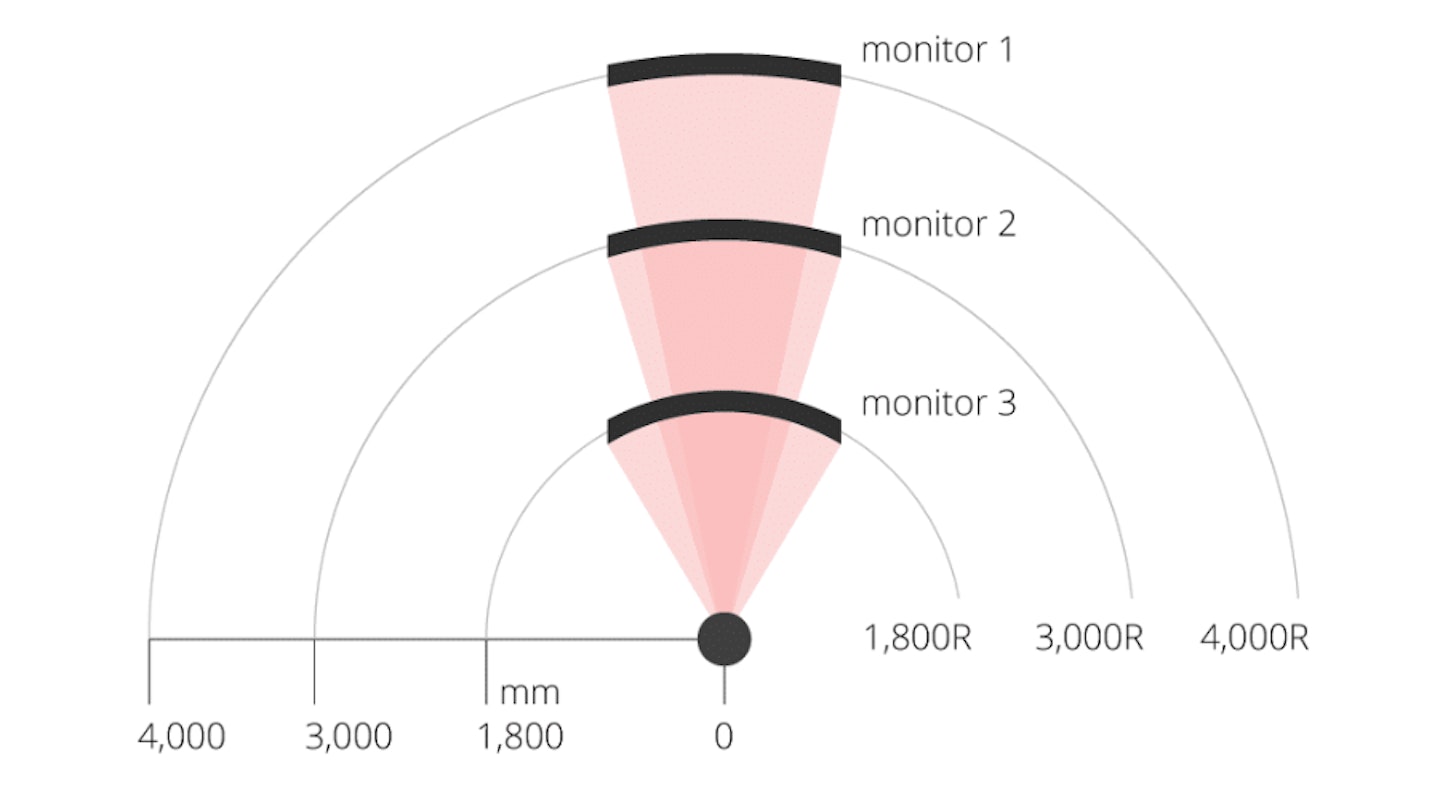
HDMI and DisplayPorts: explained
Port interfaces have a direct effect on the resolution and refresh rate attainable by a monitor. Subsequently, more recent iterations of the HDMI and DisplayPort interfaces can transfer increased volumes of information, allowing them to achieve higher refresh rates and resolutions.
Linking your screen to a gaming PC using the right cable, or connecting a monitor for an Xbox Series Xto the correct port is key. Therefore, by doing this, you will ensure that your monitor performs at the peak of its power. So, here’s a quick guide breaking down the maximum refresh rates and resolutions for HDMI and DisplayPort connections:
HDMI 1.4 - 120Hz at 1080p, 75Hz at 1440p, 30Hz at 4K
HDMI 2.0 - 240Hz at 1080p, 144Hz at 1440p, 60Hz at 4K
HDMI 2.1 - 120Hz at 4K, 60Hz at 8K UHD
Note: Some manufacturers use software to artificially raise the 120Hz at 1080p of HDMI 1.4 to 144Hz.
DP 1.2 - 240Hz at 1080p, 165Hz at 1440p, 75Hz at 4K
DP 1.3 - 240Hz at 1440p, 120Hz at 4K, 60Hz at 5K, 30Hz at 8K
DP 1.4 - 144Hz at 4K, 120Hz at 5K, 60Hz at 8K
Note: Mini DisplayPorts match the performance of their iteration. For example, Mini DP 1.3 and DP 1.3 offer the same capacities.
Why do I need a USB Type-C on a monitor?
Many monitors now come with USB Type-C capability. This is just one of several methods that a desktop PC or laptop can use to connect to a monitor. While most will use HDMI, USB-C allows computers without HDMI output ports, like Apple Mac and Apple MacBooks, to connect to a monitor without needing an adapter. This type of port is highly regarded for its impressive data throughput capabilities.
What is colour gamut?
We think that BenQ says it best: "...the range of colours which a particular device could produce or record."
There are different standards for measuring colour gamut, including sRGB, NTSC and P3. Unless you have a special interest in colour representation - for example, photography, video, or creative projects - then the nitty-gritty of these standards is mostly irrelevant. Just aim for around 99% sRGB, and you’ll be fine.
Aspect ratio
The aspect ratio is the width and height of the screen display. Because monitors and televisions ran at a ratio of 4:3, they produced a square-ish image which now looks very dated. So, although most modern widescreen monitors run at an aspect ratio of 16:9, some ultra-wide models go as high as 32:9. Thus, the higher the aspect ratio the more content is displayed on the screen.

Panel type
The panel type used in a monitor will effectively dictate the display’s quality, clarity, and response time, amongst other things. Therefore, the type of panel used affects the unit cost.
TN – Twisted nematic panels typically have narrow viewing angles and reduced colour depth.
IPS – In-plane switching panels have large colour depths and viewing angles.
VA – Vertical alignment panels have large colours depth and a viewing angle that typically sits between TN and IPS.
